Jazz has been called a dying art form, and it may be true. Fewer radio stations are playing it, and fewer people are listening to it. As a result, the audience isn’t growing. It’s aging. The concern is that when the people who grew up loving, appreciating, and playing jazz music die, the music will stop.
However, here is one thing these experts are forgetting: there will always be people who refuse to give up on music you don’t just hear, but feel, and they won’t let it die. They’ll play it in their homes, whether it’s spinning on turntables or streaming on Spotify. They’ll teach their kids about it, breathing new life into legends like Miles Davis and Nina Simone. They’ll give a new generation of jazz a chance, too, embracing new artists and flocking to pop culture references that make jazz look cool and fresh.
Still, unless you live in a place where jazz is a lifestyle — such as New Orleans, Los Angeles, or New York City — the state of jazz is questionable. You may have trouble finding live performances where you can sit and listen to live musicians blowing, chasing, and grooving their way to your soul.
If there is one thing this music genre teaches you, it’s the power of improvisation. You can give live jazz a brand new bag by doing just that. In other words, if you can’t go to the jazz club, why not bring it to you? After all, a jazz show is supposed to be intimate and personal. That’s why with the right acoustics and ambiance, your home is the perfect place to host one. Read on for instructions for creating the ideal environment for an at-home jazz performance.
Acoustics
There’s a reason that so many jazz clubs are large rooms that still seem too small for the crowd they hold, nestled in basements and decorated with plush lounge furniture. It’s because these spaces possess many of the acoustical qualities you need to hear and appreciate the warmth of jazz instruments and the soulful voices that accompany them.
While your home was probably not designed with jazz acoustics in mind, there are some steps you can take to ensure your concert space is performance ready. Better yet, you can do it without spending a lot of time or money.
Step 1 – Pick the Best Space
Improving the acoustics in your home centers around the proper reflection, absorption, and diffusion of sound. Some spaces in your home are designed to be better at that than others. Use the following list to help decide which one to use for your event.
- “The Clap Test” – Stand in different spots around the room, and clap your hands loudly. The bigger the echoes and the sharper the ringing, the more tuning the place will need.
- Size and shape – Larger, less-symmetrical spaces usually have better sound quality, because uneven dimensions reduce interference. Small, square rooms are generally the worst choice.
- Location – Pick a quiet room in your home where you can’t hear traffic noise, active appliances, birds, or other ambient and external noises. In households with multiple stories, the lowest level is typically best. Some families even renovate a mancave into a music studio, since it’s often an out-of-the-way space that’s already used for get-togethers.
- Soundproofing – Acoustics aren’t as much about soundproofing as they are sound distribution, but if you have an older home with squeaky floors or single-paned, metal-framed windows, you may want to consider some extra measures. If you choose to hire a soundproofing professional, he or she will assess your needs and design a plan that’s right for you.
Step 2 – Tune the Room
Once you’ve selected the best space, it’s time to tune your room. First, you’ll need to minimize vibrations, which helps reduce reflection. Do this by removing as many hard surfaces as possible, including cocktail tables, wall hangings, lamps, photo frames, and knick-knacks. The fewer items in the room to reverberate, the better the music will sound. If you work with a local soundproofing contractor, your pro will help you with this step. The cost to soundproof a room is between $170 and $250.
Next, you can move on to sound diffusion and absorption. If you’re planning to host more than one of these concerts or if you want to improve the acoustics in your home overall, consider hiring a sound expert to assess your needs and design an acoustically-appealing space. If you don’t want to invest in and install professional-grade bass traps, acoustic panels, or diffusers, that’s not a problem. There are lots of inexpensive, easily-reversible ways to diffuse and absorb sound around your home.
- Corners – Most experts will tell you to start with bass traps because they do double duty, absorbing mid-level and high frequencies. The pieces of foam are typically designed to fit in the corners of the room, adhering to the walls where they meet the floor or ceiling. In lieu of store-bought bass traps, you can simply place rolls of foam or insulation in the corners of your room. You can purchase them online or at your local home improvement store.
- Furniture – While you may be trying to make more room for people and sound equipment, you should leave that upholstered couch right where it is. Soft furniture and rugs naturally absorb sound.
- Windows – Cover windows with heavy curtains to absorb sound from the inside and block sound from the outside. In a pinch, you can hang quilts or blankets over your curtain rods. If you’re feeling really crafty, cut some of the foam off the roll in the corner, and adhere it to your windows for even better absorption.
- Walls – If you are crafty, you can build your own acoustic panels with wooden frames and insulation. You can also purchase wrapped canvases from a craft store and cut foam to fit the space in the back. If you want an even easier option, you can hang rugs or tapestries on your walls to help with soundproofing.
Ambiance
Now that you’ve taken care of the acoustics, it’s time to think about the ambiance. The environment you create for your home performance can be anything you choose, from dark and serious to bright and playful. The good news is that no matter your budget or the layout of your home, it’s possible to find ways to make the night a fulfilling one for the artist, the audience, and the host. In fact, you can download a complete guidebook online specifically for hosting concerts at home. Here are a few of the best tips:
- The guest list – The determining factor in an event’s success is the audience. Invite only as many guests as you can comfortably seat in your home. You should invite anyone you know who loves jazz, but don’t hesitate to extend an invitation to people who love live music of other genres as well. A good crowd will make a good show.
- The set list – Two 40-minute sets with a 20-minute break in between is suitable for most artists and guests. While the band typically plans their own songs, don’t be afraid to share your input if it improves the interaction between musicians and audience.
- Lighting – For sultry or soulful shows, low lights can give you that underground club vibe. For high-energy shows with lots of interaction between the band and the audience, more light may be better.
- Refreshments – Many hosts choose to provide a simple meal before the show, while others stick with snacks and hors d’oeuvre. Like with any other private party at your home, choose to serve alcohol or allow guests to bring their own only if you are confident that your guests will drink responsibly.
- Donations – Asking for tips, gifts, and merchandise sales for the artist doesn’t have to kill the vibe. To make guests feel more at ease, be sure to mention it when you send out the invitations, and explain that all donations go directly to the artists. You should also select a suggested donation amount or range so your guests don’t have to guess how much they should bring.
- Schedule – It may seem counter-intuitive, but the key to a laid-back session is timing. Lay out the timeline of the event early on, including when you’ll eat and break. When everyone knows what to expect, it’s much more likely that things will go according to plan.
Jazz, in any form, speaks to you. But, when it’s performed in front of you, this music reaches you on a whole other level. In short, there’s no better way to ensure jazz lives on than by introducing it to more people — and there’s no better way to introduce it than with a live show. Paying close attention to the acoustics and the ambiance inside your home not only improves the experience for the artist and the audience, makes room for the music to be felt.

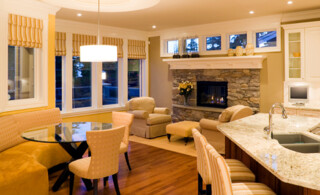 Is It Time to Ditch Your Dining Room?
Is It Time to Ditch Your Dining Room? 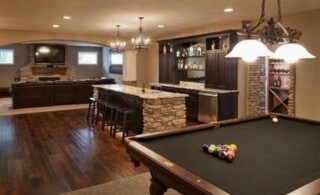 Traditional or Modern: Decorating a Den
Traditional or Modern: Decorating a Den 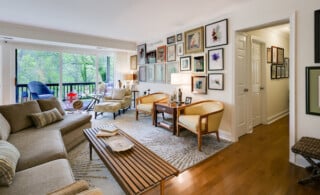 Creative Living Room Design Can Reinvent a Space
Creative Living Room Design Can Reinvent a Space 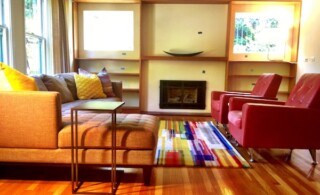 Get the Most from Your Living Room Furniture
Get the Most from Your Living Room Furniture 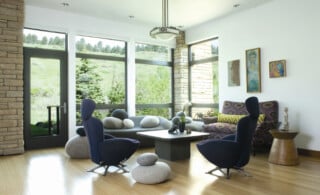 Modern Living Room Decor
Modern Living Room Decor 

Are You Familiar With This Topic? Share Your Experience.